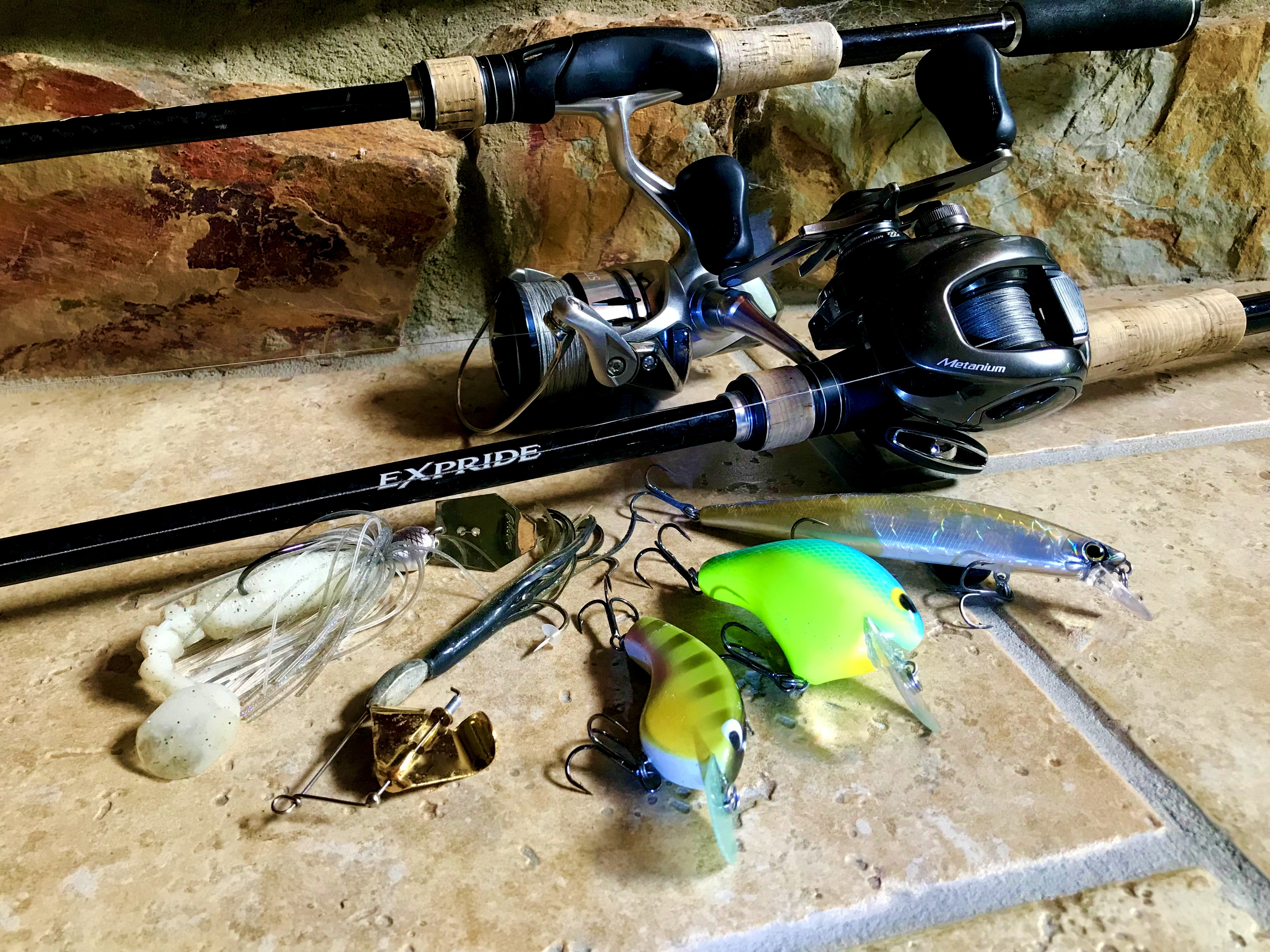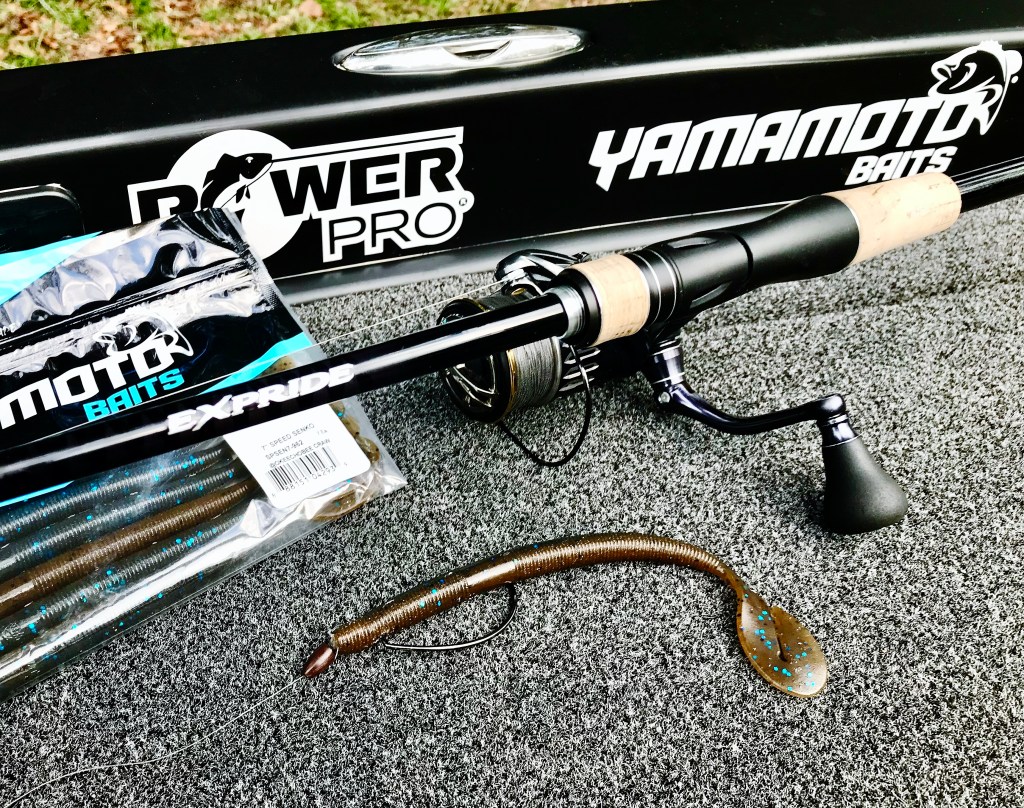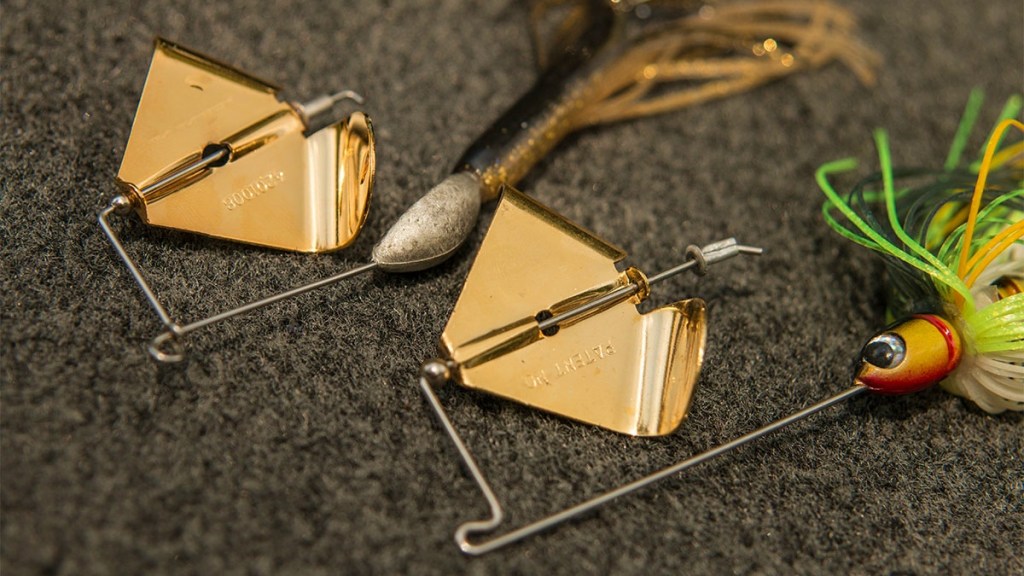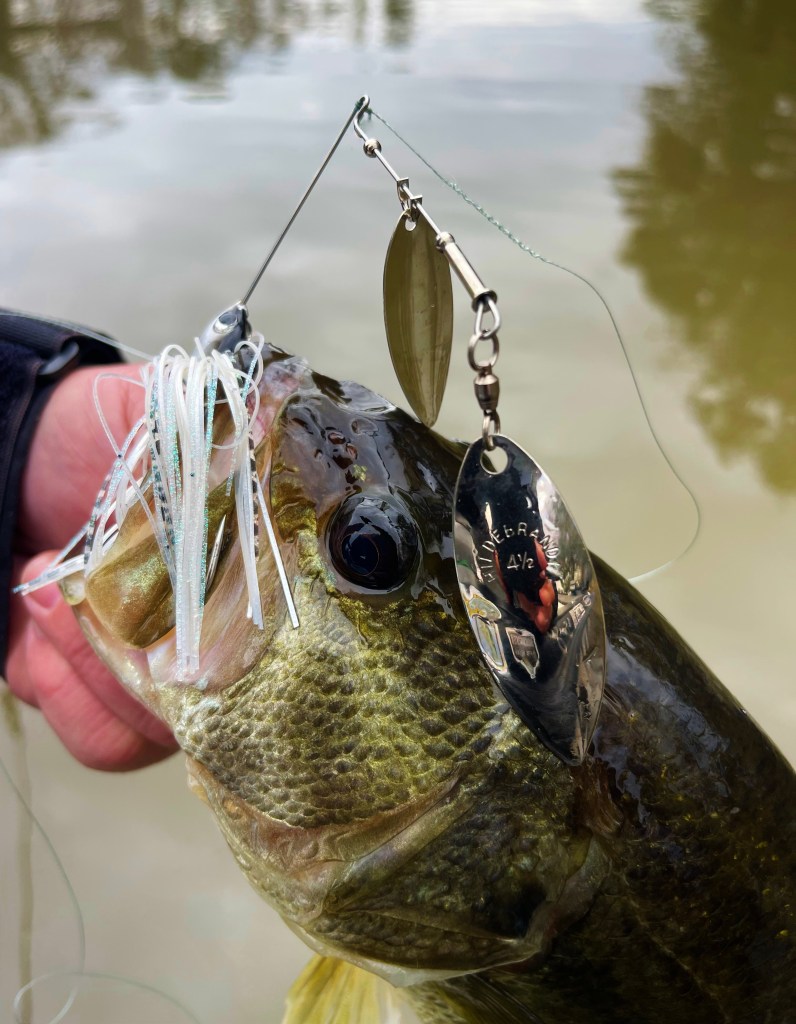
As we enter spring, more and more bass are beginning to move shallow. When that happens, they tend to spread out — some to the backs of pockets, others to protected flats or along south-facing banks. In any of these, visible cover becomes key.
Bass — especially bigger bass — usually relate to objects, like stumps, dock pilings, cypress trees, lily pads, shallow patchy grass or some combinations of these. Getting enough bites often requires covering lots of water. To help facilitate that, most savvy anglers utilize what are known as “search baits” — lures that can cover water quickly and efficiently.
Among them are buzzbaits, spinnerbaits, swim jigs, bladed jigs, crankbaits, jerkbaits, swimbaits and speed-style worms. All are obviously moving baits, but which to apply first will depend on certain factors — like depth, type of cover, water temperature, mood of the fish, prevailing weather … even confidence gained through personal experience.
No stones unturned
Regardless of the waterbody I’m confronted with, this time of year I’m looking in protected areas first. Spring may bring warmer weather, but strong coldfronts are still likely. So I try to find areas where radical weather changes will have less of an impact.
On natural lakes and reservoirs, I’ll check creeks, coves and pockets with minimal runoff, as well as southerly facing banks. On rivers, I’ll check the backwaters or any flats with little or no current — especially those with vegetation, stumps, brush or cypress trees. Canals can also be good.
If vegetated flats are the target, I’ll look for irregularities — like open holes or patchy sections, or seams where different grasses mix. I’ll also check the shallowest edges, especially if there’s a void between those and the bank. Narrow, protected voids are like magnets for spawners.
The same goes for flooded brush and cypress trees. Instead of starting on the outside, I’ll try going inside toward the bank, while looking for irregularities such as thin and thicker sections, or isolated targets. In any of these scenarios, I’m focusing on protected water.
The same goes for docks. I target their backsides and connecting catwalks — from the bank to the first significant dropoff. And if they are laced with brush, all the better.

Right tool for the job
One of my favorite search baits in shallow vegetation is a speed-style worm, like the Yamamoto Speed Senko. With the trolling motor steadily advancing the boat, I fan cast ahead and reel the bait back just under the surface. If the grass I’m over is submerged, I’ll slow the retrieve just enough to maintain intermittent contact. If the grass is touching the surface or emergent, I’ll swim the Speed Senko right on top or through any alleyways I can find. My normal rate of retrieve is steady to brisk.
Other good choices for vegetation include buzzbaits, spinnerbaits and swimming and bladed jigs. Those, too, should be retrieved at a steady to brisk rate of speed. Remember, we’re covering water. So the trolling motor will be in perpetual use as our lures comb the shallows.
When deeper grass, stumps or submerged brush are the targets, that’s when jerkbaits, crankbaits, swimbaits and heavier bladed jigs tend to shine. Again, I try to maintain intermittent contact or at least close range with the cover. It’s so crucial. When a lure touches an object and either tears free or deflects off that object, that’s when bass are most likely to strike.
Among my favorite crankbaits are Shimano’s Original Macbeth and Macbeth Flat 57F. The Original is a full-body, wide-wobbling lure that displaces a tremendous amount of water, and it deflects off cover well. The Flat 57F has a circuit board lip and internal weight-transfer system, which make it easier to cast. The lip forces it to swim sure with a tight shimmy. Depending on the situation, one can outperform the other, but both are essential to my needs.
For wire-frame lures, I rely on those I designed for Hildebrandt — including the HeadBanger and SqueakEasy buzzbaits, and The Blade and Tin Roller spinnerbaits. The HeadBanger is a clack-style buzzbait, which is ideal for pulling fish out of cover or from long distances. The SqueakEasy is more subtle, perfect for sparse cover and lethargic fish.
As for the spinnerbaits, The Blade is better in grass and the Tin Roller is better for hard cover. Both feature tandem blades and heads with lifelike characteristics, making them ideal for clear water applications.
I also like the Z-Man JackHammer ChatterBait with Yamamoto Zako Trailer. Color depends on the situation, but I carry black and blue, white, and various sunfish patterns with matching Zako trailers.
When it comes to swimbaits, there are countless styles that will serve well for the technique. Choose those that give you confidence, but when in search mode, try to match the approximate size and profile of the baitfish the bass are feeding on.

Balancing your arsenal
Regardless of the type of lure or cover you’re dealing with, it’s important to have the right balance of tackle — a system, so to speak.
For example; when I’m throwing the Speed Senko, it’s usually on a 7-foot, 2-inch medium-heavy spinning rod, paired with a 3000-size reel. More specifically, a Shimano Expride EXS72MHB rod with Stradic or Twin Power 3000. I spool up with 10- to 15-pound Power Pro Super8Slick V2 braid and tie directly to an extra-wide-gap 5/0 or 6/0 hook. To add some distance to my casts, I use no more than a 1/4-ounce tungsten bullet weight … preferably less.
Here’s a short video to better illustrate the method and tackle I use.
For buzzbaits, bladed jigs and spinnerbaits, I suggest 7-foot to 7-foot, 6-inch baitcasters spooled with either 30-pound braid or 17- to 20-pound clear line — either mono or fluoro. My specific preferences include the Expride EXC72MHB and EXC76MHB paired with Curado DC or Metanium MGL 150-size reels in 7:1 or 8:1 retrieve ratios.
Crankbaits and jerkbaits are a different story. I like rods with a more parabolic bend and some forgiveness in the tip. The actions I use are still crisp enough to snatch a lure through submerged grass and brush, yet soft enough to avoid tearing off fish. My favorites include the Expride EXC610MB, EXC70MGB and EXC72MHGB, again paired with a Curado DC or Metanium 150-size reel. I spool them with 10-, 12- and 14-pound Mastiff fluorocarbon line.

Search summary
Remember, this is the time of year when bass seek the shallows. And in many cases, that will lead them to protected areas.
Keep moving, at least until you get a few bites. And do so with lures that can cover water quickly and efficiently. Once you find the fish, then you can slow down and detail those areas with slower presentations.
As spring progresses into summer, search baits will continue to help in eliminating non-productive water. Use them with confidence and they will find fish for you in a hurry. I promise!
Follow Bernie Schultz on Instagram, Facebook and through his website.





